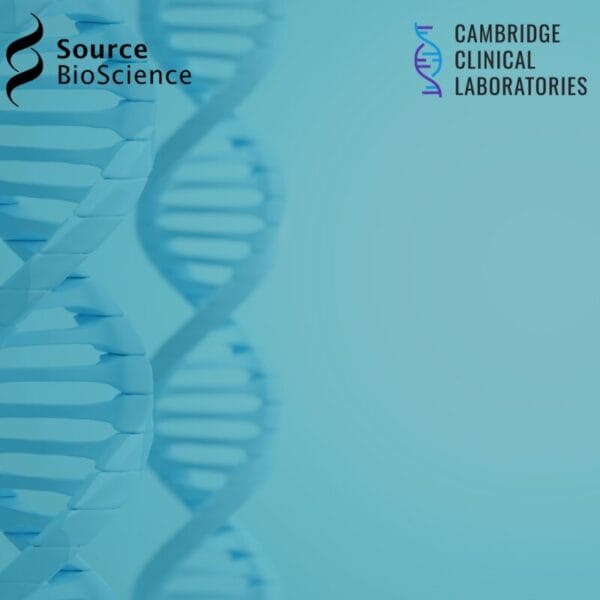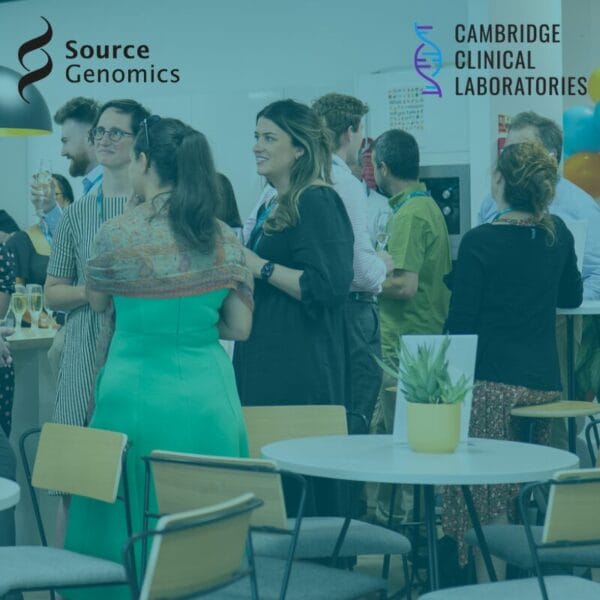NGS vs Sanger Sequencing
DNA sequencing, the process of delineating the order of bases (A, C, T, G) in a section of DNA, was first carried out in the 1970s.
There have been many developments since then, resulting in a range of modern sequencing techniques and technologies spanning diverse uses, both in the clinic and in academic research.
This article will explore two commonly used sequencing methods, NGS vs Sanger Sequencing sequencing methods, looking at how they work, their respective advantages and disadvantages, and their applications.
What is Next Generation Sequencing (NGS)?
NGS denotes a group of techniques and technologies based on massively parallel sequencing, which evolved from the need for faster and more cost-efficient methods for large sequencing volumes.
Following the inception of DNA sequencing in the 1970s, alternative sequencing methods were explored throughout the 1980s and 1990s with the aim of multiplexing the sequencing process. This led to the emergence of commercialised massively parallel sequencing technologies in the 2000s, and thus the emergence of NGS.
These methods have revolutionised many areas of research and clinical testing, such as the 100,000 Genomes Project by Genomics England. The project sequenced over 100,000 genomes for the first time in 2018, a feat made possible by high-throughput sequencing provided by NGS technology.
How does NGS work?
All NGS is based on massively parallel sequencing, though the specific methods vary. The most commonly used technique, sequencing by synthesis (SBS), involves the separation or tethering of individual DNA sections of interest, which are then amplified, and the incorporation of nucleotides detected.
This can be done by detecting pyrophosphate release, assessing changes to pH due to hydrogen ion release, or measuring fluorescence from fluorescently labelled nucleotides.
Advantages and disadvantages of NGS
NGS is high throughput, allowing many sections of DNA to be sequenced very quickly and lowering the per-base cost for large sequencing volumes. Additionally, a high level of multiplexing is possible, allowing for flexible assay design and the ability to target several specific genes at once.
On the other hand, many NGS techniques sequence large sections of DNA by breaking them into small fragments for sequencing and then stitching the sections back together computationally. This increases the bioinformatic requirements for analysis and can cause challenges when sequencing complex DNA or detecting copy number variations due to issues when re-assembling the fragment reads.
What is Sanger sequencing?
Sanger sequencing was one of the first sequencing techniques developed and continues to be widely used today.
Invented by Fred Sanger and colleagues in 1977, early Sanger sequencing methods were completely manual and used radiolabelled nucleotides. Changes to the methods, such as the use of fluorescent tags and increased automation, along with the introduction of sequence databanks and search tools, have made the process easier and more time efficient.
One of its most prominent uses was in the Human Genome Project, where it was the primary sequencing method used to sequence over 90% of the human genome for the first time in 2003.
How does Sanger sequencing work?
Sanger sequencing relies on fluorescently labelled chain-terminating ddNTPs (dideoxynucleotide triphosphates), which prevent fragment elongation when incorporated.
When used alongside normal dNTPs (deoxynucleotide triphosphates) in an amplification reaction of the DNA of interest, many fragments of different lengths ending in fluorescently labelled ddNTPs are produced. These fragments are separated by length using capillary gel electrophoresis and a laser used to excite the fluorescent tag at the end of each fragment, from shortest to longest, to produce a chromatogram from which the DNA sequence can be determined.
Advantages and disadvantages of Sanger sequencing
Sanger sequencing is fast and cost-efficient for sequencing small sections of DNA individually. It is the gold standard for DNA sequencing given its high accuracy, making it an effective tool for detecting single nucleotide variants and small insertions or deletions.
Furthermore, the data analysis process is not reliant on specific data handling pipelines or bioinformatic tools, making it more accessible. However, the use of ddNTPs and electrophoresis for fragment separation means that only one section of DNA can be sequenced at a time, limiting the throughput and speed for large sequencing volumes.
Key differences between NGS and Sanger sequencing
Cost and time efficiency for both techniques depend on the sequencing volume. For a single or limited number of relatively small sections of DNA (below 1,400 base pairs), Sanger sequencing is the most effective. However, if looking to sequence in bulk, whether whole genomes or deep coverage of specific genes, NGS is cheaper and faster.
NGS is also highly scalable; it has a high capacity for multiplexing and can provide high genome coverage. Therefore, NGS can obtain more information per sample amount compared to Sanger sequencing, which is limited in scalability as it cannot be multiplexed and requires increasing sample for increased sequencing.
On the other hand, Sanger sequencing is highly accurate, while the accuracy of NGS depends on the technique used and varies depending on the complexity of the DNA being sequenced.
Which is the best method to use?
NGS is high-throughput and can be very efficient when used to sequence large amounts of DNA, such as whole exome or genome sequencing. Additionally, it can be used to sequence specific sections of DNA in bulk to provide greater coverage, such as when searching for novel variants.
On the other hand, Sanger sequencing is cheaper and quicker for individual or limited sections of DNA and is especially practical where simple and quick data analysis is preferable. This makes it very useful in clinics, such as for familial variant testing including prenatal and carrier testing, and in research, such as in verifying plasmid constructs.
Additionally, combining high-throughput NGS sequencing with highly accurate Sanger sequencing to confirm NGS results or fill in gaps can be very powerful.
Book DNA sequencing with Source Genomics
Source Genomics is a leading commercial provider of both Next Generation Sequencing and Sanger Sequencing in Europe. With standardised and fully bespoke NGS and Sanger sequencing offered, Source Genomics can provide the right service for all sequencing needs.
Contact us today for a free consultation on how Source Genomics can answer your sequencing requirements.
Sources
Contact us today and one of our skilled account managers will be in touch with a free consultation including further information and pricing details.
Share this article

